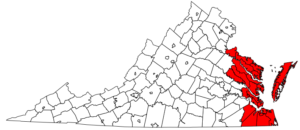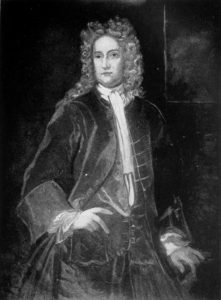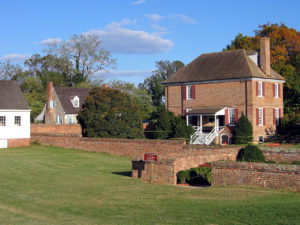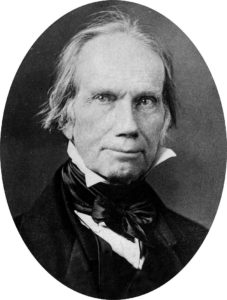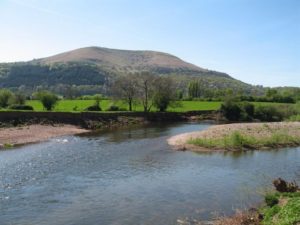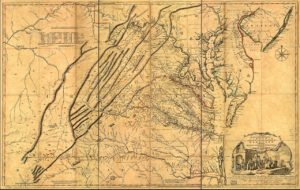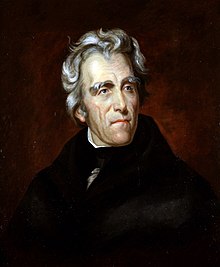Migrations, Political Culture, and Economic Base
The post-1800 choice of agriculture, and minimal industrialization for the South’s future economic base followed not only from climate, resources, and geographical logistics but also from the migration/ political culture configuration that populated the North and South during the colonial era and continued into the Early Republic Era.
The colonial/Revolutionary War eras should be considered as America’s first “Big Sort”.
The settlers of what were to become the northern hegemony were Puritans, Quakers, German refugees, and Dutch (New York). All in their own way were advocates of a new value-system and non-traditional governance–predisposed to early capitalist individualism in agriculture and industry. In the half-century between 1640 and 1690, a Puritan Parliament engineered a political and economic realignment. That prompted an English Civil War, a Puritan Military Dictatorship, a Hybrid Royal/Parliament Restoration, and a Glorious (but bloodless) Revolution that redefined English governance toward a Parliamentarian democracy.
The losers and the refugees in this extended English Civil War settled in the South. The victors had already settled in the North. This is our first Big Sort.
It wasn’t so much that the winners got preference. Rather, it matter more that the losers carried with them a strong preference for the “old ways”–and less openness to the new value-systems and its economic and political institutions and practices. Logically, this had to affect their preferences in regards to economic development. Before we can develop the salient economic development distinctions critical to our history of American S&L ED, we need to settle these folk in their respective geographies, and observe how they dealt with each other in the new American Republic. They had to evolve a shared policy system and that was not an overnight venture. I will argue it was not until cotton became the great economic equalizer that they settled on a volatile and tension-filled, but sustainable set of policy systems. Those policy systems practiced economic development in ways quite distinctive from those found in the North. And then that nasty Civil War intervened. Let’s be more specific.
Settlers in the South were English Royalist beneficiaries (Calvert’s Maryland), post-1650 Royalist refugees who lost the English Civil War to the Puritans (Tidewater Virginians/North Carolina), and Barbados slave planters who for various reasons (none good) settled in the islands off South Carolina and Charleston. Georgia would be an initial exception to this–but in short order succumbed to the dominant southern cultural motif. The remainder of the South was Indian-settled and “belonged” to either Spain or France.
A second group of immigrants were ethnically-varied, a melange, but shared a common experience, they lived in borderlands were were militarily and culturally torn asunder by the goings on during the half-century. They came to the United States wanting nothing more than be left alone to live their lives as they saw fit–and the best way to accomplish that feat was to make a beeline to isolated border peripheries of the United States. As we shall see they confronted and adapted to the new political and economic order over a considerable period of time–one can argue they still haven’t made their peace with it.
Between 1750 and 1860 both royalists and refugees were tied to late medieval values expressed in “the manor”, with politics that were based anti-democratic landholding elites against their former serf, now tenant and freeholders (or indentured servants). Both lived in a world that fused government with economy. Each grouping struggled to express their ambitions, individual autonomy, and personal lifestyle. Accordingly, the 17th and 18th Century South (below Philadelphia) became the last bastion of English late-medieval civilization. The cornerstone of that society and civilization was the manor-plantation–not the city/town. Export-agriculture was how they paid the bills. A deferential elite and its deferential workforce, and an exportable agricultural product was what made it work. It also set in motion a Great Civil War with the Yankee and Midlanders who wanted nothing to do with them and their economy and way of life.
Say it another way, this is the foundation of present-day American regionalism. Regions (the North and South in 1789) were for all practical purposes two distinct nations living under a shared Constitution, held together by vagueness, compromise, and a hope it would somehow work out over time. Salient to economic development was the reality each adopted a quite different economic base. The cultural war now had an economic dimension–or was it the other way around? ED would, as always, be caught in the cross-hairs.
the Tidewater “Cavalier”
The Tidewater (southern Delaware, Maryland, “olde” Virginia, and northern North Carolina) was the cultural and economic “ground-zero” of pre-1800 Royalist refugees. Encouraged by Virginia Governor Berkeley, a Royalist, and descendant from Norman William the Conqueror’s entourage, immigration of key Royalist families into Virginia began in earnest after 1650. The great-great-grandfathers of our Founding Fathers, including John Washington, Richard Lee (Robert E. Lee), and George Mason. Thomas Jefferson’s family did not fit this pattern–Welsh by way of the West Indies, as did the Randolph family into which Jefferson married. Jefferson was no Royalist [1].
These are the “cavaliers” whose heritage and lifestyle was embraced by future “Deep South” elites in the period previous to the American Civil War. These traditions and the values subsumed in them legitimized the economic-political system they established. They are the Elites referenced in the opening statement in “Gone With the Wind“. The system Royalists set up in the Tidewater preserved in the New World a way of life lost in the Old. Political-economic-society was fused, and the “system” was “owned” by the powerful land-owning families and their patriarchs. The contrast with the Yankee (and other northern cultures) is obvious, and it generated a serious literature in both north and south–a literature lost since about 2000. [2]
The Tidewater economic base consisted of huge tobacco plantations with intervening individual farm homesteads, and small unincorporated “centers” where daily affairs were transacted and Church attended. Tobacco was exported and imports coordinated by an array of London-based merchants (Washington’s was Robert Cary). Royalist plantation-owners by the late 17th Century established an economic system, based on tobacco export, planted and harvested initially by “indentured servants” and Native Americans; during the mid to late 17th century imported African/West Indies slaves replaced unwilling indentured servants and too few Indian captives.
Indentured servants that survived the experience were provided with fifty acres (usually on the colony’s western periphery–today’s Shenandoah Valley). Many attempted to establish their own version of a Virginia manor, most were unsuccessful. Several populist uprisings sporadically occurred (1663, 1675, 1683–1786-7 Shay’s Rebellion was not the last). This quarrelsome workforce obviously did not work well and another replaced it: African slaves.
Where did these early African slaves come from? The Portuguese were the original slave traders, establishing outposts along the African coast during the 16th century; they brought it to Brazil and the Barbados in the 1650’s. In the Azores, Barbados, and Brazil, the crop was sugar cane–and slavery was key to producing that product in bulk for export. Financial syndicates (such as Cooper & Locke’s Royal African Company and the Dutch West India Company) invested in the slave trade as well as African coast slave factories.
African slavery provided the workforce for a succession of commodity-export products, such as sugar cane, tobacco, rice, indigo, cotton, and coffee. The “triangular trade” over four centuries seized up to 11 million Africans–not including those who died in transit–and sent them to the New World [3). The first African slaves appeared as early as 1620, and by 1700 about 10% of the Tidewater population were slaves; by 1720 about 25%, and 40% in 1760.[4] The ratio of whites to slaves peaked about 1(slave) to 1.7 (whites) , and after 1740 African importation fell off dramatically. Organic growth was sufficient to Tidewater needs after that point. Why? Because the Tidewater was in economic decline.
The Tidewater economic base was seriously unbalanced. In this period (thru the 1760’s or so), the plantation oligopoly functioned well and generated wealth for the elites. The system, however, rested on slavery–with all that implies. Plantations coexisted with small, marginal, often subsistence white-owned farms which all-too-often planted tobacco instead of produce, generating only those manufacturing/trade sectors of immediate use to the agricultural economy. Nor did it generate and accumulate finance capital for investment as will be shortly explained. Economic cycles based on the price of tobacco or trade disruptions (like the Revolutionary War) resulted. The most serious long-term deficiency, however, was tobacco itself. By 1790, its limitations had already thrust the Tidewater economy into decline.
Simply put, tobacco exhausted the land, consuming all its nutrients, and leaving behind a field unable to produce more than stubble. A tobacco field last about five years–and then was discarded or severely downsized. That is why the plantations were so huge; a plantation owner was on a perpetual quest to replace his depleted land with new fertile land.
The profits from tobacco were so fantastic, most plantation owners essentially “bought land and slaves to produce tobacco, so that they could buy more land and slaves to produce more tobacco“–a cycle leading to Jefferson’s near-bankruptcies. Part of the problem for late 18th Century Tidewater plantation owners was they were not sensitive to the early rise of a new economic system, with a decidedly non-medieval way of managing economic enterprises.
Not only were many Tidewater planters not appreciate the chronic soil depletion tendencies of tobacco, and were seemingly oblivious to the tobacco land-slave-land-production circular investment loop, their plantation economics rested principally on tradition and medieval economics. This is ironically revealed in a letter from Jefferson to Washington (1793) in which the former noted ” I have never before thought of calculating what were the profits of a capital invested in Virginia agriculture“[0]. Of note, Washington, the more astute of the two, had switched from tobacco to wheat in 1766. Washington died the richest man in America–but then he was only a part-time plantation-owner.
By 1800, there was an excess of Tidewater slaves, and Tidewater over the next decades was a net exporter of slaves to other southern regions. In the decade between 1790 and 1800 40-50,000 slaves were sold to non-Tidewater owners; that rose to 210,000 by 1810. [5] These were the roots of what will be a half-century long horror story: the second middle passage, or passage to the interior. More on that in the next Deep South module.
Plantations and the Shredded Community
The Virginia English settled under the auspices of a trading company or a private corporation which acquired a charter from the English crown. These Virginia, and later Maryland (with a separate charter), colonists were “land entrepreneurs”, interested in setting up their individual homesteads as soon as possible. They felt little need to establish towns or commercial centers as each homestead was so large in territory (a plantation) as to be a self-sufficient and which, given its easy access to rivers and the Atlantic, could directly ship and receive its produce to Europe from the plantation’s own piers [6]. As late as 1765 Washington shipped exports and received imports directly from the wharf on his plantation. Where the plantation system/economy flourished, urban communities were secondary. Non-Plantation households “lived off” needs and prosperity generated by the plantation, much as freeholders did back in Merrie England.
Tidewater state/local government, as we know it today, was imposed by the 1789 American Constitution–not before. Tidewater Gentry Elites set up the initial state policy system. Virginia’s state government, for example, simply replaced its predecessor, the House of Burgesses. which legislated on behalf of a decentralized self-sufficient plantation tobacco-export economy, managed by gentry families elites and patriarch. There were few to no towns or cities. Baltimore was Tidewater’s largest (1790 population was 13,500). Virginia itself had no major port. There were no public schools or town/county governments; local affairs were overseen by an office of “justice of the peace”. In short the barest rudiments of local government existed, creatures of the dominant families/landowners of the district–and this was Tidewater local government in the Early Republic. It was still pretty much in place when the 1950’s Byrd Dynasty ruled the Tidewater roost.
Town-building and town planning got off to a rough start once Jamestown was settled in 1607. The King pressed the Virginia Company to induce the Burgesses to approve ordinances to systematize city/town formation. in order to facilitate tax collection. The response was underwhelming, and only in 1662 did the royal governor induced the legislature to approve that legislation–introducing a tobacco tax to fund Jamestown first urban renewal project, and to subsidize building new towns on major rivers.
This legislation, however, was not successful, and in 1680 additional port-of-entry legislation had to be approved. That legislation required the county to buy fifty acres, provide tax abatement for craftsmen and artisans, and even specified the selling price of lots. Some 57 towns were listed to be created–none were. Lawsuits by planters followed, and the act was suspended. In 1691 yet another act was approved, but it was quickly rescinded.
A final go at port-of-entry/town-building legislation was enacted in 1706–including most of the features above–and it too was rescinded after a local outcry and refusal to cooperate. Only one major town, Yorktown, resulted from this melange. [7] If one wonders how the rather bizarre non-system of contemporary Virginia came about–this Tidewater heritage is a good place to start the explanation.
Maryland was equally enthusiastic about city-building legislation whose basic motivation was tax collection. Lord Baltimore forced the earliest Catholic immigrants to plat/survey/layout a town (St Mary’s) in 1634. The colonial government, pressed by the King, enacted its first legislation in 1668, 1683. 1684, 1686, and 1706. Compliance was more successful in Maryland, however, as seventeen towns were established in that period–most eventually became ghost towns. Special legislation to create capital cities, however, was more successful. Both Annapolis (1694) and Williamsburg (1699) were built to conform to planning and legislative requirements specified in the legislation. [8]
From this today’s Tidewater local government evolved. As a former eight-year Maryland resident, I can testify it still remains a cacophony of forms and jurisdictions–with cities carved out of counties, with a host of non-incorporated localities “coordinated” by county/state government. Virginia is much the same. It is the result of the distinctive structure of local government that resulted from Tidewater colonies and the plantation system. It created what has been called “the shredded community”
A “dispersed rural population on small subsistence farms orbiting around plantations relied for community services on crossroad churches, courthouses and markets. These constituted a kind of “shredded community” as scattered focal points for farming, trading, politics and religion”.[9]
The shredded community reinforced Privatist individual self-sufficiency, and sustained it through county-level services provided minimal governance as possible. The few municipal governments as existed, or were later created, were considered more as “counties” or city/county.
Tidewater Migrates
There is a reason why Robert E Lee, a Tidewater Royalist from way-back, joined the Army–and why Washington became our first Economic Developer. Tobacco was an agricultural gazelle that flamed early in our history. Yes, it went on to produce the Tobacco industry–which will be briefly discussed in a later module, but the Tidewater economy was declining during the Early Republic. Second sons of Tidewater elite moved out to find their fortune, often with help from Mom and Dad. North Carolina, Georgia and Alabama, not to mention Tennessee and Ohio–Midwest would benefit.
The Early Republic’s most notable Tidewater-born hero was Henry Clay–born from a descendant of the early Jamestown settlement, and a moderately prosperous Tidewater plantation landowner. Clay emigrated early to Lexington KY where his political career was launched. I mention Henry Clay because he ranks among the most influential in our 19th Century ED history. He formed the Whig Party–which shall infest a great deal of this Theme’s modules. He also was a considerable nuisance to Andrew Jackson–with whom he had a duel. He did so from Kentucky, not his birth-state Virginia.
The Scotch-Irish
The “Scots-Irish” label is an 19th century American misnomer. From the start these refugees perceived themselves as “a mixed people“, another thought they were “a mixed medley“. The Scots-Irish label is commonly attached to periodic bursts of refugees that began in 1717-8, and periodically (1729, 1741, 1755, 1767, and 1774) arrived en masse at the docks of Philadelphia where most disembarked. Each wave disproportionately came from one or another different northern English/Irish-Ulster/Scotch location. In composition each wave differed, as did its demographics and its migration pattern. Over the more than half-century, Fischer describes their aggregate as …
mixed in their social rank, mixed in their religious denominations, and most profoundly mixed in their ancestry, which was Celtic, Roman, German, English, Scandinavian, Irish, and Scottish in varying proportions. They were also very mixed in their place of residence–coming as they did from England, Scotland, and Ireland …. But no matter whether rich or poor, Anglican or Presbyterian, Saxon or Celt, they were all a border people. They shared a unique regional culture which was the product of a place in time [10].
Their common denominator was each wave came from a long-standing, chronically-depressed, socially-persecuted borderlands between England, Scotland and Ulster-Ireland. Woodard [11] asserts they arrived in five distinct waves between 1717 and 1776. Theirs was a culture, based less on ethnicity, than on their geography. Resident in the most war-torn, famine-stricken, socially-persecuted counties of northern British Isles, they shared a common “culture” forged over 500 years.
In such an extended period, the intensity and constant disruption they experienced, these folk developed traditions, protective behaviors, and shaped their economic, political and social interactions and institutions to survive constant invasion, repression, and economic disruption. Sometimes by conscious design, and other times by simply settling into lands unsettled by Europeans, they wound up in America’s borderlands (the ‘western back-country”)–contested by Native Americans–and simply transferred their borderland norms and (lack) of institutions to the New World.
Fleeing English-Scottish enclosure movement, the latest round in Civil Wars or border incursions, famine/economic depression, and conqueror’s repression, the “Scotch-Irish” (by 1800 totaling nearly 2 million [12] immigrants) poured left their initial Pennsylvania home base and did what came naturally–they moved. Mobility proven to be “an American characteristic”, but it has been an almost instinctual response to difficulty or to the advance of modernity by the Scots-Irish. In the mid-1900’s the migratory manifestations associated with the Southern Diaspora confirm that the so-called “exit strategy”–an economic explanation for internal migration, has at least one additional dimension.
Scots-Irish Agricultural, Small Town and Borderland Preferences
Their’s was a pre-industrial, hardscrabble agricultural-herding economy characterized by small holdings in small communities. Their culture was a functional response to survival. Using scorch and burn agriculture, temporary make-shift homesteads, and comfortable in small agricultural towns and villages. The Scotch-Irish were not disposed to create and grow cities, and the areas they settled to this day are characterized by smaller cities and small towns. They wanted no part of the industrial city. Government, certainly local government, was consciously set up to be weak and fragmented to best preserve individual liberty and individual actions. By default, most activities in most policy areas were left to the private sector—economic development was no exception.
These fiercely independent, but experienced agriculturalists/herdsmen did not permanently settle in Pennsylvania’s western counties, nor did they stay very long in cities. Most headed south down the “Great Wagon Road” (New Londonderry, New Hampshire was an exception). Waiting for them with open arms (usually holding a tomahawk or rifle) were the Native Americans. A lively debate/war followed between these two peoples over the next half century—with disastrous consequences for Native Americans.
Scotch-Irish moved through Pennsylvania, western Maryland into what is today West Virginia, and into the Shenandoah Valley of Virginia.. Continuing along the Great Wagon Road, Scotch-Irish moved into Appalachian North Carolina’s Piedmont area by 1740, and eventually reached into equally unsettled western South Carolina Piedmont around the early 1760’s. Russo comments that in the “backwater country of Virginia and North Carolina … the Piedmont” between 1744 and 1776, he could find only twenty-eight formally established administrative or trade centers “many of [these] inland towns were planned, but many were not, at least at the time of their initial settlement. They grew from tiny clusters unplanned and unfounded.” [13]. By 1796 they settled in Kentucky, Tennessee, eventually reaching the Mississippi, crossing it into Arkansas, western Texas, and Oklahoma.
When pressed, as in the British Isles, they moved out–communities in their world were not permanent, housing was so basic it was easily abandoned. Scots-Irish embraced cotton as an economic opportunity. During the early years of the 19th Century they drifted into Georgia, and northern parts of Alabama, Mississippi, Louisiana, Texas and Louisiana. In later years they would be the “Okies” who fled from the Dust Bowl to the Central Bowl of California (and Los Angeles) and to the assembly plants of Detroit and Akron during the Great Migration.
Scot-Irish central loyalties were to “people”, their family and to their namesake clans–blood feuds were their rule of law.
They were very concerned with their own unwritten code of behavior, priding themselves on their independence, and ever ready to uphold personal honor and retaliate on attacks on family or community; they were punctilious about being rambunctious. The point was personal independence, natural liberty; Presbyterianism tended to be in line with this, but other denominations would do….
These people didn’t much like commerce or commercial society… seemed more set on self-sufficiency and tended to avoid engagements in the market economy. Initially high transportation costs kept them mostly separate from the coastal market economy…. They wanted to conquer territory—oust the British, expel the Indians, take over vast lands from Mexico…. They wanted lordship rather than economic cultivation.[14]
Constantly drafted into armies or militias, or often supplementing their meager income by raiding across the border, they knew how to fight, and instinctively adapted to military way of life.
Imperialistic by nature, they fought Native Americans for land every bit as much as the New England Yankees had. They invaded Cherokee lands as early as the 1750’s. They crossed swords with anyone who sought to impose limits on their behavior and the Tidewater plantation aristocrats and the moral Yankee “on a mission” raised their wrath exceedingly. When the time came, many fought for the North, led the succession of West Virginia from Virginia, but during Reconstruction they resisted bitterly the Northern (Yankee) attempts to reconfigure their society and economy through black emancipation.
This was a society egalitarian in its manners, but very far from egalitarian in wealth. Large landholdings were the common pattern, and deference was paid to those who accumulated wealth and demonstrated bravery and competence in battle; social distinctions were vivid but not permanent. As David Hacker Fischer writes, ‘Inequality was greater in the back-country and southern highlands than in any other rural region in the United States’. But large landholders were expected to treat their neighbors as equals”.[15]
While highly individualistic, the Scotch-Irish did not value egalitarian income distribution and extremes of wealth within their communities were far from uncommon. Scotch-Irish sharecroppers worked for Scotch-Irish plantation lords. For many, many years the Scotch Irish lived on the economic margins of southern and southeastern states and constitute a core element of the white and black poverty that rendered that region the poorest, least urban in the nation.
Inequality and Masses versus Elites seemingly should be linked–but for the Scots-Irish they weren’t. We shall pick up on this assertion in the “Deference Culture” section below.
Using Andrew Jackson as a Scots-Irish Cultural Example
Andrew Jackson was Scotch-Irish. Born in 1767 somewhere in the Waxhaws region of South Carolina, his Presbyterian parents, born in northern Ireland (county Antrim), arrived in America only two years before.
At age twelve Jackson and his brother participated in the Battle of Hanging Rock (Revolutionary War). Captured soon after that, a captive Jackson resisted a British officer and his face was permanently scarred by the officer’s sword. Woodard calls the Scotch-Irish, “Greater Appalachia”. He devotes particular attention to their bellicose nature, asserting their “culture had been formed in a state of near-constant war an upheaval, fostering a warrior ethic and a deep commitment to individual liberty and personal sovereignty”[16].
Jackson’s values, military “achievements”, and politics were etched into, and divided the nation before, and after 1828, when he became President. The Panic of 1837, which followed, greatly prompted by closure of the National Bank, profoundly affected the subsequent evolution of American ED. His values expressed in the platforms of a realigned Democratic Party shaped state and sub-state structural policy systems and injected Scots-Irish value/cultural preferences cornerstones principles of the nineteenth century Privatist economic development.
Although his programs certainly precipitated the 1837 Panic and State fiscal defaults which, in turn, resulted in a national wave of amended state constitutions his values were often injected into the constitutional gift and loan clauses intended to prevent any possible recurrence. These gift and loan clauses fundamentally altered the course of our ED history.
Scots-Irish Policy System and Economic Development
The structural expression of Jackson’s political values, the weak mayor, long ballot, aversion to strong executives and bureaucracy, and frequent elections permeated local government–even in states where he personally was not liked. His chief opponents were: Henry Clay, Tidewater-born; John Calhoun, a Carolina Scots-Irish plantation-politician; and Daniel Webster a Yankee Brahmin. Economic development and the relationship of public to private developed into full-scale Grand Canyon-like policy chasm in pre-Civil War America. Internal improvements and our External MED “connect the urban dots” strategy divided state and local politics deeply in the antebellum South, and reappeared in the 1880-1890’s Populist Movement. An underdeveloped topic in Theme 3 was that Jackson and Scots-Irish votes frustrated the attempt by northern and western Whigs (like Clay and Webster) to use the national government to promote state and local economic development. Clay’s American System was frustrated in Washington and in the states by Jackson and Democrats allied with him.
Using the Jeffersonian yeoman farmer as a starting point, Jackson Scotch-Irish carried this label into new territory not especially congruent with Jefferson’s model. Stressing self-sufficiency, limited government, low as possible taxes, close as possible to the people decision-making, and a reluctance to engage in commercial markets (preferring, for instance, to barter liquor to banks and currency). Government was not their hereditary friend, they resisted its noble efforts to instill the virtue’s of civilization into these western geographies. A mentality that led to coining expressions such as “the common man” and the “American public” reveal a distinct elite versus mass perspective, and the Scots-Irish glorification of “common sense” as opposed to “expert fact”. ED professionalism and data-driven ED can expect to run afoul of the Scots-Irish.
Scots-Irish and the so-called Deference Culture
A concept, often attributed to southern political cultures, is the so-called “deference” of masses to their elites”. No doubt in part tied to its roots in an agricultural economy and rural life, in the Scots-Irish case, it also interweaves with “clans”–a broadly defined extended family usually sharing a common surname and historical heritage. Scottish ancestry seemed most prone to clans, but clans were evident in border counties of all nationalities as defensive familial institutions. The salience of Scot-Irish clans is suggested by the character of its immigration movements, which consistently meant migration en masse with extended families, including very young children, rather than single males. Migrations reached settlement points when their clan elder or “thane” settled down–Hatfield and McCoy’s for example. The southern highlands were initially in the 19th century described as clan settlements [17].
Clan hierarchy reinforced a deference to clan elites, and developed alongside a noticeable economic and political inequality. As the Scots-Irish settled into the southern states, areas in which they were dominant or numerous often developed a “class” of elites that were economically successful and often politically-powerful. The overlap with plantations is also evident. This “backwater” class hierarchy acquired a name: “the Ascendancy”. The Ascendancy, when dominant, created distinctive policy systems and politics, which may in the late 19th and early 20th century have evolved into “southern machine bossism” and in general was congruent with the regionalism of the one-party Democratic South. It also, as we shall see in subsequent modules, led to Scots-Irish adoption of cotton–and slaves–with the plantation as the ultimate embodiment of earthly success. This was in marked contrast to Scots-Irish attitudes, and behavior, in geographies where cotton, slaves and plantation were not possible or successful.
The beginnings of the Ascendancy can be traced to the old country. A goodly number of Ascendancy elites that arose in 19th century southern politics came from families/clans that were barons-lesser nobility–prominent and relatively affluent merchants. While numerically most Scots-Irish immigrants were working and middle-class, a few were from the old country’s local elite. Immigrant clan families carried this with them into their new world settlements, and through family socialization and clan deference these families could rise to become local elites in local and southern state politics.
It may come as a shock, but Andrew Jackson’s family, including his father, were well-to-do farmers/merchants in the old world–his wife Rachael’s uncle had been President of Princeton University (1759-61). Jackson himself was bequeathed a serious sum by his Irish grandfather who remained in the old country–he used it to acquire training as a lawyer. Zachary Taylor was also from such a clan. Families such as Mecklenbergs, Knoxes, Shelbys–and even Jackson’s protege, ‘young hickory”, James K. Polk, future President, were members of this Ascendancy. In South Carolina, a rival Ascendancy Scots-Irish family were the Calhouns, including John Calhoun, Jackson’s Vice-President [18].
Impact of Scots-Irish on Future American ED
The Scots-Irish were to play an amazingly complex, almost bifurcated role in the future evolution of many states and sub-regions. Always more of an attitudinal (less ethnic) grouping, unified by reaction to externally-imposed policy actions or economic/political events, the Scots-Irish hearkened more to families and clans, personalistic than rational, local than national–although fiercely nationalistic when threatened by external forces [19]. While usually described in terms of ethnicity, I attribute class, working and lower middle-class occupations and attitudes as more descriptive of their hopes, fears, and values. That perception is not commonplace today, and the current Trump-inspired fascination with “populism”, stresses an ethnic dimension–which, I think, fails. Isenberg’s White Trash [20], with whom I, on the whole am uncomfortable, does share with me the firm belief that economic and social class–enshrined as a way of life suitable for generations–more accurately taps what we will find through this history.
With the inevitable exceptions like Carnegie and Ford, Scots-Irish are not fond of disruption, are hard-working but not entrepreneurial, and more than anything want to live their lives as they see fit, shared with families, friends, and their local communities. Their limited, highly personalized, let me live my (and mine) life, and let me attain such purposes as I see fit often leaves them outside the day-to-day political world. Their entry into politics is sporadic and emotion-laden, but can persist for a decade or more in its intensity. Otherwise, “Leave me alone and let me live my life as I see fit” is their instinctual reaction to politics, authority and regulation.
Their’s is not a deferential society in the sense they defer to their “betters”; their “understanding” with Deep South plantation owners was usually matched by deference on both sides of the class equation. If pressed they will oppose government, elites, and political authority willingly. If not the author, they are usually a core constituency of the various “populist” movements which have consistently shaken conventional American politics. We shall see this expressed in our Upcountry South Carolina module.
Highly individualistic, apolitical in good times, they turn to politics, disruptive politics, in troublesome periods–which are frequent, if periodic. They seem particularly sensitive to preachy elites whose lifestyle and values they do not share–Woodward characterized them as die-hard anti-Puritan Yankee (or Progressives) and they almost instinctively react negatively to external authority as part of their cultural socialization. Scots-Irish are aspirational only in the sense they want their fair share–and then be left alone to spend it as they see fit. Their relative indifference to inequality, possibly revealing that regard it as a natural reality, has also generated a level of opportunism and entrepreneurialism to make it on their own.
The Scots-Irish 20th Century story will consume many a page in this history, and their continued propensity to move around will play a major part in the famous Sunbelt regional change as well as the Southern Diaspora. No friend of government or big cities, and feeling no particular compulsion to raise the standards or empower the disadvantaged, the Scotch-Irish and their Greater Appalachian political culture remain a bastion of Privatism, although ambivalent regarding corporate elites and industry/sector concentration. In any case as we shall soon discover, the Scots-Irish play a major role in the rise of the Cotton Belt, and they will bedevil post-Civil War Redeemer policy systems as they learn to cope with the realities of industrial-urban capitalism. As it turns out the Scots-Irish are not alone in populating antebellum southern policy systems, and they quickly learn they must deal with Barbadian English, and their slave-based economic base. To that topic we next turn.
Footnotes
[0] Richard Lyman Bushman, the American Farmer in the Eighteenth Century: a Social and Cultural History, (Yale University Press, 2018).
[1] https://www.monticello.org/site/research-and-collections/jeffersons-ancestry.
[2] For those who wish to taste it, I suggest William Taylor’s Cavalier & Yankee: the Old South and the American National Character-or-James Cobb, Away Down South.
[3] Walter Johnson, Soul by Soul (Harvard University Press, 1999), pp. 3-8.
[4] Colin Woodard, American Nations, p.56.
[5] John Murrin, et al, Liberty, Equality of Power: a History of the American People, Vol 1, p. 313
[6] John Reps, Town Planning in Frontier America, p.113.
[7] David J. Russo, American Towns, p. 11-12.
[8] David J. Russo, American Towns, p 12.
[9] David J. Russo, American Towns, p. 11.
[10] David Hackett Fischer, Albion’s Seed, 1989, p. 621; The internal ethnic complexities of the “Scots-Irish” are discussed in great detail by David Hackett-Fisher in this classic. They are the “fourth” seed of the evolving colonial American culture–East Anglican Puritans, Tidewater or Southern English Cavaliers, and Pennsylvania-English Midlands being the others.
[11] Colin Woodard, American Nations, 2011, p.102.
[12] Michael Barone, Shaping Our Nation (New York, Crown Publishing-Random House, 2013), p. 19. We rely on Barone concerning the path of various migrations. Barone (p. 27) describes Scotch-Irish migration as “one of the largest immigrations in proportion to preexisting population in American history, similar in magnitude to the Irish and German immigration of 1847-56 and the Ellis Island immigration of 1900-14”. The number arriving each year approximated the population of Boston, then the third largest city…”
[13] David J. Russo, American Towns, p.15.
[14] Michael Barone, Shaping Our Nation, op. cit. pp. 17-19.
[15] Michael Barone, Shaping Our Nation, op. cit. p. 35. Barone quotes David Hackett Fischer, Albion’s Seed: Four British Folkways in North America (New York, Oxford University Press, 1989), p. 749 and pp. 751-753.
[16] Colin Woodard, American Nations, op. cit., p. 102. Each wave was the result of an economic or political disaster in England, Scotland or Ireland.
[17] David Hackett Fischer, Albion’s Seed, 1989, pp. 662-668.
[18] David Hackett Fischer, Albion’s Seed, 1989, pp. 642-650].
[19] Scots-Irish are described in terms of coming from England’s borderlands and fleeing to America’s backcountry, where external authority is weakest, and proximate borders are hostile and dangerous. Celtic, they have been pushed aside from the Romans, Angles-Saxon, Danes, and Normans, producing a cultural heritage and socialization, if not a distinctive language, literature, song and militaristic proclivities, that in my opinion have hardened into an English-speaking, Judaeo-Christian, externally-generated economic and social class that after a thousand years instinctively resists outside intrusion into its local community, family and individual decision-making. Migration has been critical in its survival to the present day.
[20] Nancy Isenberg, White Trash: the 400-Year Untold History of Class in America (Viking, 2016)


